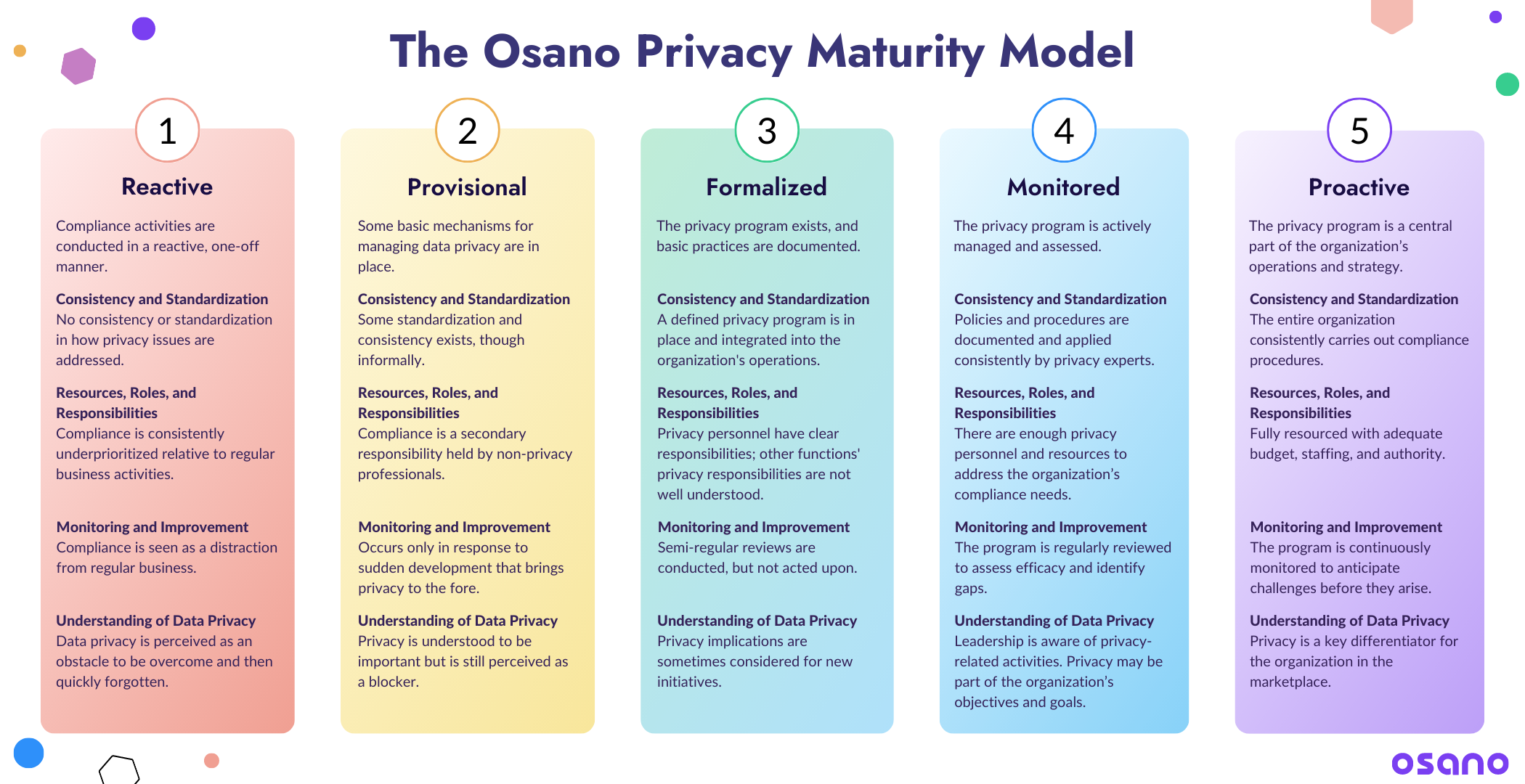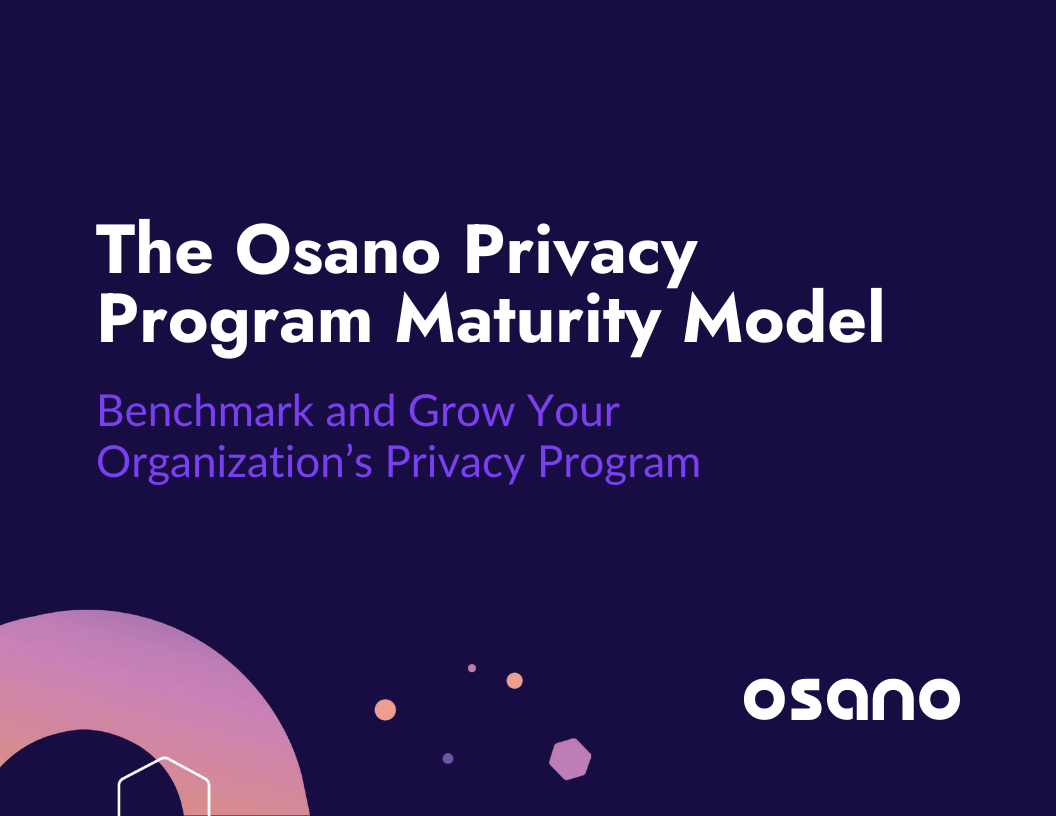8. Consent Management
Consent management—that is, obtaining, managing, and documenting the consent of individuals for the collection, use, and sharing of their personal information—is a key component of both privacy ethics and regulatory compliance.
Organizations need to consider the nature of consent management requirements as per their governing law, such as whether consent must be opt-in, opt-out, include specific language or consent controls, and so on. You’ll also need to consider how to operationalize data subject consent preferences, how to prove and record consent preferences without violating privacy, and additional factors.
9. Subject Rights Request Management
Subject rights request management refers to receiving, processing, and responding to requests from data subjects to exercise their data privacy rights, such as the right to access, rectify, delete, or restrict the processing of their personal data. Data subject rights requests can be one of the most visible aspects of your organization’s data privacy operations. Consumers won’t always be aware of what work you do on a day-to-day basis, but they will notice if your privacy program is unable to meet their request within required timeframes or if your response contains errors.
10. Data Minimization and Purpose Limitation
Many consumers are comfortable with businesses that want to use their personal data for one specific, disclosed, and limited purpose. The trouble comes when organizations hold onto their data indefinitely and use it for a multitude of purposes that aren’t disclosed. At the same time, premature deletion of data can hinder operations.
That’s why the concept of purpose limitation is important—your organization should know and declare what consumer data will be used for prior to collection. Once you’ve completed that purpose, you must delete or anonymize the data.
Going further, data minimization requires you to collect only the data you need to meet that purpose and no more. As you might imagine, operationalizing these two principles is easier said than done.
11. Contract Management
Modern businesses rely on a small galaxy of vendors, partners, outsourcers, and others to operate. Since they often share personal information with these third parties, it’s important to have a legally sound mechanism that guarantees these third parties treat your customers’ information appropriately. Data privacy regulations typically require data processing addendums for that very reason.
Contract management refers to the process of ensuring that privacy obligations are incorporated into contracts with third-party service providers and vendors. Privacy professionals need to work closely with legal and procurement teams to identify when contracts need language addressing data privacy, which existing contracts must be updated, and how to negotiate new contracts with privacy-related language.
12. Vendor Risk Management
Once your customers’ data passes to a third party, there’s little you can do to continue to protect it unless you engage in robust vendor risk management processes. There is a significant overlap between vendor risk management and contract management. However, aspects of vendor risk management are not related to contracts; similarly, not all contract-related privacy issues involve vendors.
13. Security
Considering all the trouble privacy professionals go through to ensure individuals’ personal data is treated respectfully, it should come as no surprise that taking adequate and reasonable security measures is an essential element of a privacy program. Most privacy regulations do not specify what exactly constitutes “reasonable security,” so it is important that organizations take steps to review their technical, administrative, and organizational security controls.
14. Privacy by Design
When developing new products, services, or anything that may process personal information, it is tempting to consider factors like privacy at the very end of the process. But this increases the odds that personal information receives little protection or none at all.
Privacy by design ensures privacy factors are considered early in the development process. While the onus of implementing privacy-by-design principles lies with the developers, strategists, and project managers who work on the various initiatives that may involve personal information, privacy professionals can take certain steps to encourage privacy by design.
15. Governance and Accountability
Governance and accountability refer to the policies, procedures, and processes that an organization puts in place to ensure that its data privacy program is effective and compliant with relevant laws and regulations. It also includes the mechanisms for ensuring that individuals and teams within the organization are held accountable for meeting the organization's privacy obligations. Without such a system in place, proving compliance, ensuring follow-through, and identifying compliance gaps are significantly more challenging.
16. Program Management
Data privacy program management involves the overall strategy, planning, implementation, and continuous improvement of an organization's data privacy program. Taken together, the individual elements described in this article serve as a good approximation of a data privacy program, but the whole of a privacy program is more than just the sum of its parts.
This element represents the holistic, end-to-end management of a data privacy program. That includes everything we’ve discussed here as well as any other privacy program elements unique to your organization.
Putting It All Together
So, that’s a lot of information overall. How do you put it together? Coordinating 16 different elements of a privacy program seems like an overwhelming task, especially since most privacy functions only have a few experts on payroll.
One way is to take a step back and simplify your perspective. It’s good to be familiar with these different elements, but it could be more useful to think about your privacy program in terms of overall maturity. That's why Osano developed a privacy program maturity model. It describes five different levels of privacy program maturity.

Combined with these 16 privacy program elements, this maturity model will help you identify where your organization is today, and what it needs to do to get to the next level.
Osano Privacy Program Maturity Model
Score and evaluate your privacy program's operational efficiency with the Osano Privacy Program Maturity Model. With this model, you'll pinpoint gaps, identify next steps, and ultimately grow your privacy program's maturity.
Download Your Copy
.webp?width=1220&height=1090&name=Osano-guarantee-seal%20(1).webp)





